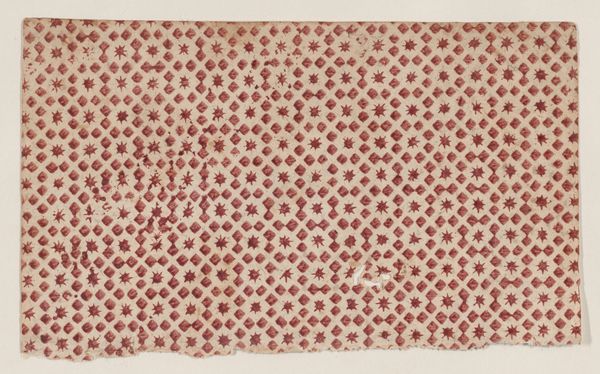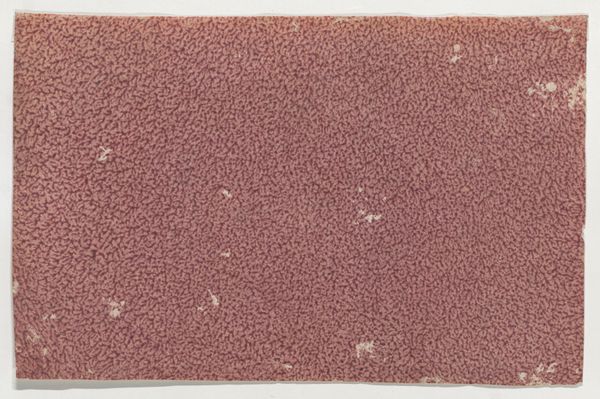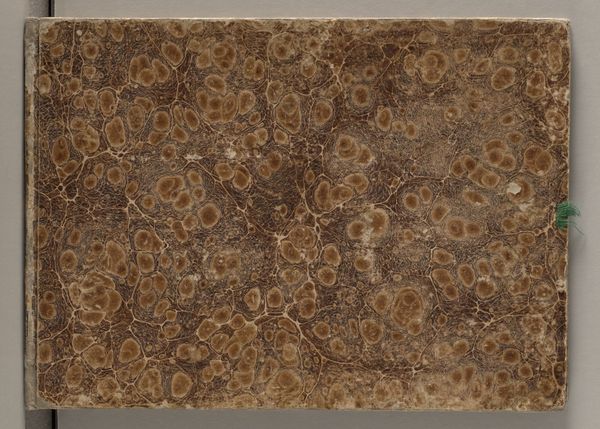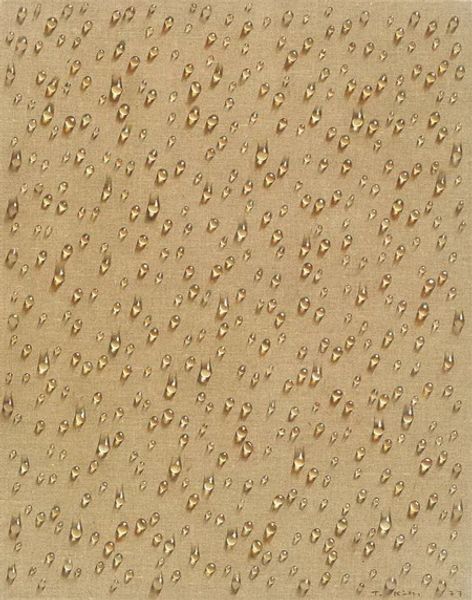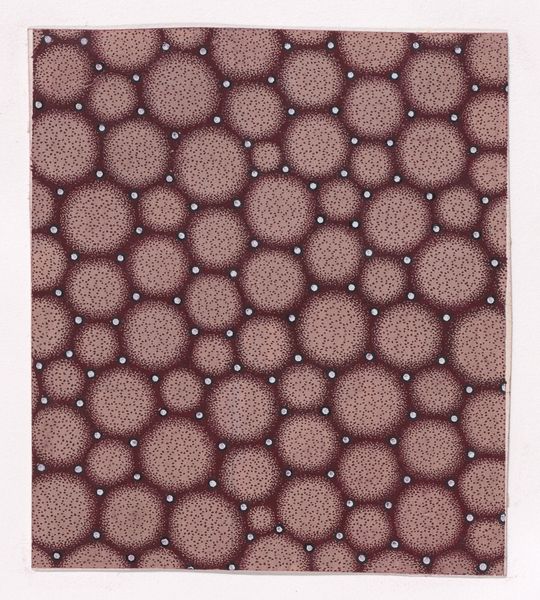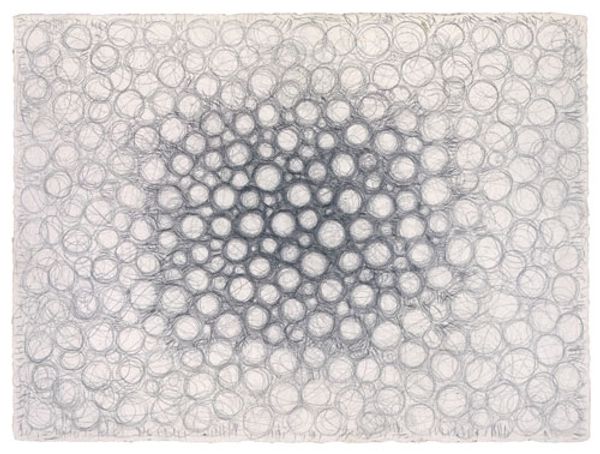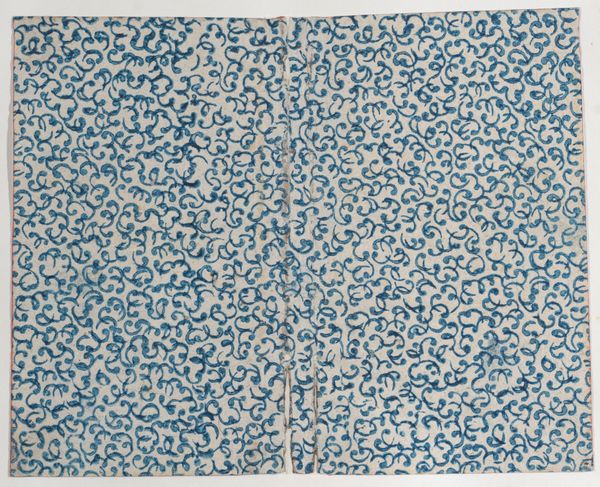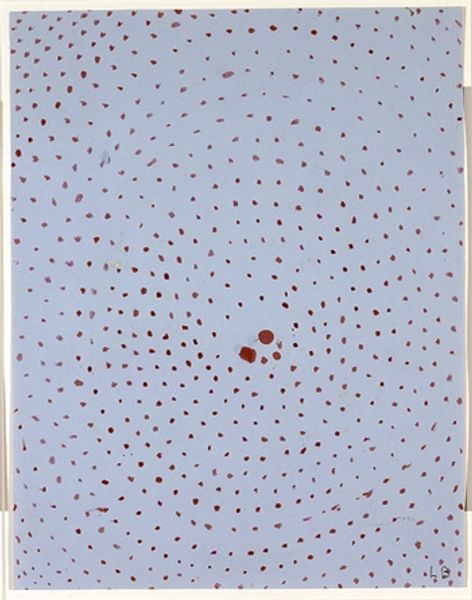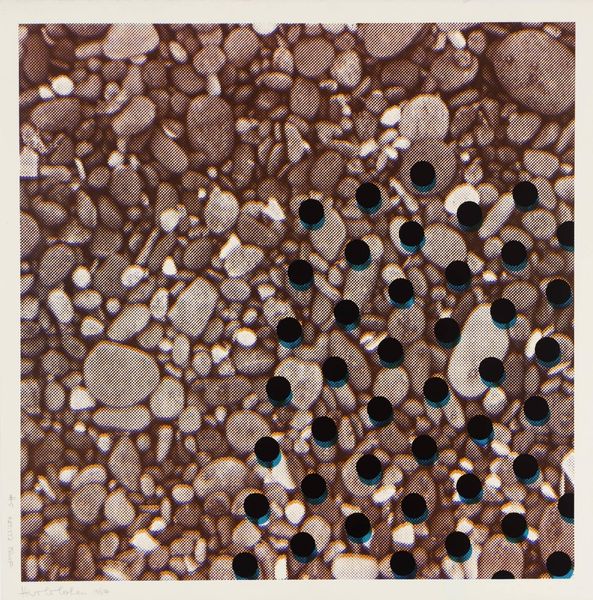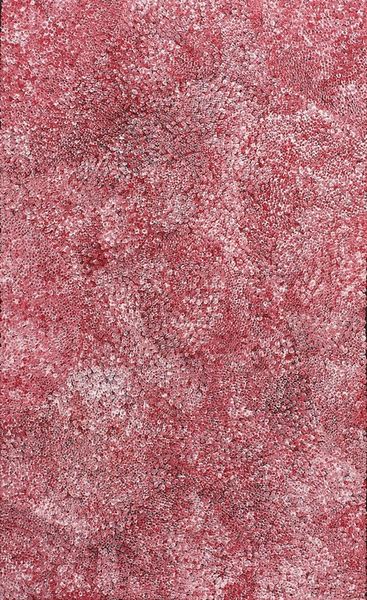
Sheet with overall geometric pattern with squares and stars 1800 - 1900
0:00
0:00
drawing, print, textile
#
drawing
# print
#
textile
#
geometric
Dimensions: Sheet: 4 1/2 in. × 7 in. (11.5 × 17.8 cm)
Copyright: Public Domain
Curator: Here we have an intriguing piece, an anonymous “Sheet with overall geometric pattern with squares and stars,” dating from sometime between 1800 and 1900. It resides here at the Metropolitan Museum of Art, rendered as a drawing and print likely intended for textile use. Editor: It reminds me, oddly, of faded wallpaper, or a vintage quilt. The monochromatic palette and repeating pattern create a sense of calm, but also, perhaps, of something being lost to time, don’t you think? Curator: Precisely. Pattern-and-Decoration movements throughout history, including in the 19th century, were often sites of intense negotiation regarding gendered labor and artistic hierarchy. This sheet, probably a study for textile design, complicates our assumptions about the "minor" arts versus so-called "high" art, and who gets to produce each. What power structures are subtly reinforced when we deem this a study rather than an artwork itself? Editor: And the squares and stars themselves! Squares often represent stability, the grounded world. Yet stars are aspirational, navigational guides, almost transcendent. Does their combined symbolism say something about the desires or perhaps the restrictions of the time period? The way those small stars burst inside the grid is really interesting to me. They're constrained yet striving. Curator: An excellent point. Furthermore, textile production, especially by the 19th century, intersected deeply with colonial networks and capitalist expansion. This seemingly simple design participates in larger economic and social histories of exploitation and exchange, touching upon themes of labor, identity, and globalization. Who designed this, for what purpose, and at whose expense? Editor: The cultural memory woven into these patterns is quite powerful. Even divorced from specific origin or use, the sheet retains echoes of domestic spaces, craft traditions, and perhaps, the faint glimmer of hope amidst structured existences. I am wondering if this could be a work that embodies a struggle to reconcile practicality with yearning? Curator: Perhaps. The anonymous nature of the work is a key consideration for me, as it represents not just the individual artist but also collective, and often marginalized, creative energies. It encourages us to re-evaluate the conditions under which art is made and valued, and question whose voices get amplified and whose remain hidden. Editor: It leaves me pondering the untold stories contained within its repeating forms and faded pigments. Curator: Indeed, a potent reminder that even the seemingly simple object can reveal complex socio-historical dynamics.
Comments
No comments
Be the first to comment and join the conversation on the ultimate creative platform.
